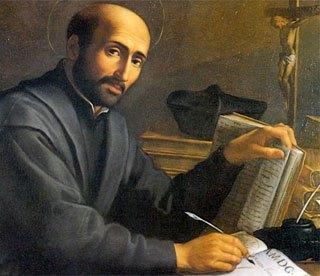Life of St. Ignatius of Loyola
Born Iñigo Lopez into a noble family in the Spanish Basque region in 1491, he began life as a courtier and professional soldier. A serious war injury derailed his ambitions for military glory and professional success. An internal crisis and a spiritual awakening sent his life off in a totally different direction.
Years of spiritual searching and wandering led him to the University of Paris. As a student he was registered with the name “Ignatius,” after the early Christian writer, martyr saint, and bishop of Antioch. And it is as Ignatius of Loyola that history has remembered Iñigo.
In Paris, he gathered around him a small community of like-minded students who were effectively the first members of what would later become the Society of Jesus - the Jesuits.
Jesuits were – and continue to be – known for many things, especially going to the frontiers of the world and for their work in education.
Ignatius was born 20 years after Copernicus, eight years after Luther, and a year before Columbus left on his first voyage: In his lifetime, the worldview of the European late Middle Ages underwent dramatic changes, including how people understood of the physical universe; the unity of European Christians was shattered; and of the world revealed itself to be peopled by far more diverse inhabitants than had been thought previously.
Those seismic shifts – along with the Christian humanism in which he was schooled in 1530s Paris – deeply shaped the work of the Society of Jesus. By the end of Ignatius’ life, there were more than 1,000 Jesuits, in countries as far spread as Africa, India, Malaysia, Indonesia, and Japan.
Ignatius wanted his Jesuits to go out and "seek and find God’s will in everything.” They did so with instructions from Ignatius, their leader in Rome, to “seek the greater glory of God” and the “care of souls.”
He died in 1556 and was canonized in 1623.
